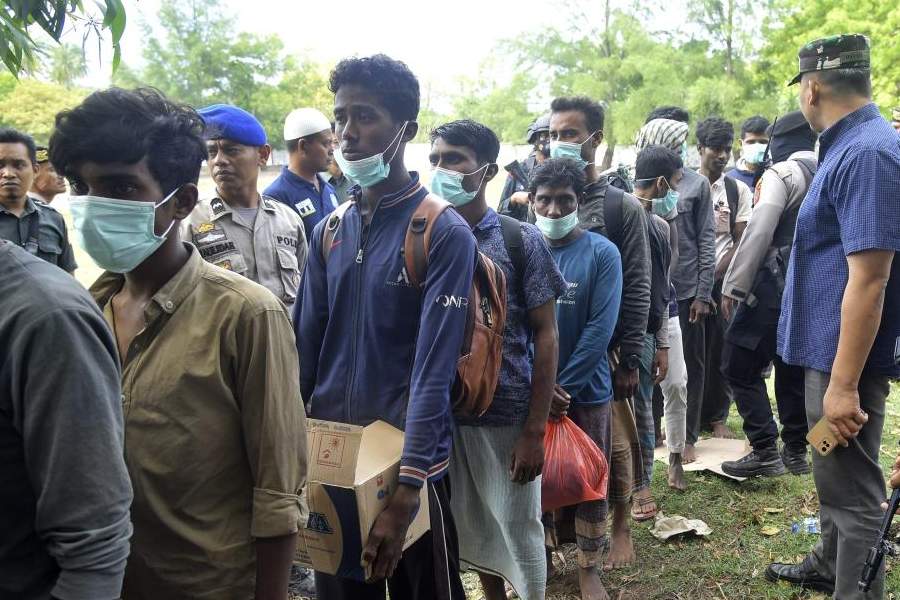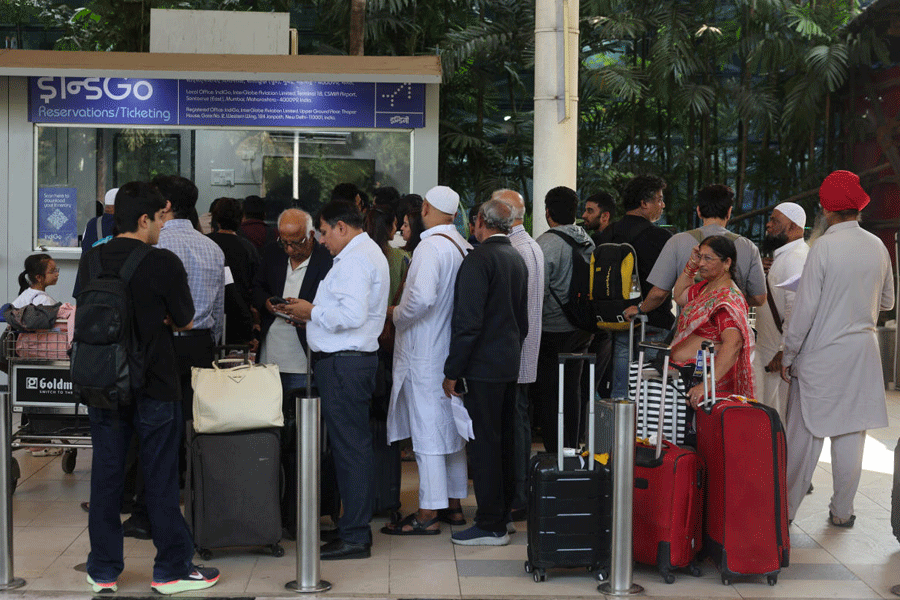 |
Homeless on Google Earth By Mukul Kesavan, Permanent Black, Rs 595
One of the pleasures of working for the opinion pages of The Telegraph is that I get to read Mukul Kesavan’s weekly column a day earlier than his legion of fans does. The task of reviewing the work of a favourite author is unenviable. But having re-read the essays in Homeless on Google Earth — most of them have appeared in The Telegraph as well as in other reputed publications — I am certain that my allegiance to the MK Fan Club is based on sound reasons.
Ideological affinity being one of them. Kesavan’s unflinching commitment to a liberal, secular democracy is inspiring in an India that seems to be turning Right, seduced by the prospect of growth. Then there is his rare ability to hold forth on such seemingly disparate subjects as the legacy of Julian Assange, the rhinoceros in Kruger National Park as well as Bollywood’s inability to skilfully use Dharmendra’s talents. Given our general indifference to what is wrong with the world, many readers may not share Kesavan’s anxieties. But these pithily written essays, with their biting prose, will demand the attention of even apathetic readers.
The real pleasure of these essays lies in their ability to deconstruct what is bandied about as the truth. For instance, the notion that pre-liberalized India remained protected from the dubious pleasures of consumerism is dismantled through Kesavan’s reminiscences of his cravings for a Seiko watch or Nittaku table-tennis balls as a young boy. The prose, while being evocative, is shorn of sentimentality. “The middle class children of the 1960s loved things much more intensely than their children do simply because they didn’t have them. You can spot us at a distance in airport terminals: we’re the grey-haired men who can’t tear themselves away from the cigarette cartons even though we stopped smoking three years ago....”
While scanning the past, Kesavan remains alert to the responsibility of unravelling its hold on the present. In essence, most of these works are sociological investigations into entrenched prejudices. For instance, the Anglophone Indian’s condescension towards popular Hindi cinema, Kesavan argues, is the result of a post-colonial anxiety that forces him or her to scoff at Bollywood’s lack of originality and its phonetic infidelities. But limitations often have unintended virtues. Unlike the biased Anglophone, Kesavan recognizes Bollywood’s ability to nudge the audience to barter realism for a shared fantasy, thereby transforming itself into a vital cog in the wheel of pluralism that keeps a divided and diverse India in motion.
Enterprises engaged in the business of saving the world, too, suffer under Kesavan’s scrutiny. Kesavan is fulsome in his praise of Wikileaks for blowing the lid off State secrets kept outside the public domain with the help of draconian laws like India’s Official Secrets Act. But while complimenting the digital world for democratizing information, Kesavan does not lose sight of its hidden warts. The culture of exhibitionism spawned by the virtual universe disturbs him considerably.
The success of Kesavan’s inferences lies in his ability to source quirky tools for his investigations. He furnishes credible evidence to support his argument that the “history of middle-class India in the 1960s and 1970s can be written in soap and detergent”. Pears, Moti, Cinthol, each was a reliable signpost of class difference in an India where the Nehruvian vision was on the wane. Decades later, our disappointment with Slumdog Millionaire is traced to the director’s colossal ignorance of India’s sensitivity to dialect. An actor playing the role of a chawl kid with an accent remains unacceptable even though we are willing to suspend rationality and accept the Khans — now ageing grotesquely — as cherubic college students.
Often, the same tool is used to solve multiple puzzles. Kesavan turns to language, once again, to explore Bombay’s claim on cosmopolitanism. The city’s decision to embrace pidgin Hindi enabled it to pip puritanical Delhi, Madras and Calcutta to the coveted crown. Bombay may have kept at bay violent indigenist insurrections that claim the city to be a fief of the Marathi-speaking people. But the city has had to make several concessions: it agreed to a change in its name and remains indifferent to the episodic but organized attacks on immigrant populations. Were he to address the resilience of Marathi parochialism in a city feted for its catholic tastes, it would have been interesting to see if Kesavan came up with explanations other than those of economic decline and identity politics.
Elsewhere, Kesavan unmasks the bigotry of Martin Amis, the evils of majoritarian regimes not just in India but also in the United States and Sri Lanka and illuminates the perverse spectre of racial polarization in the context of a supposedly progressive judgment in a rape case in Jerusalem. Boundaries — geographical, spatial or temporal — are redundant in this world of contagions that Kesavan battles energetically. All of this could be pretty depressing, had it not been for Kesavan’s deadpan humour. Here is Kesavan describing the scourge of book launches: “There was a launch where the author of a first-rate travel book was in conversation with one of Delhi’s many polymaths. This person — critic, artist, activist, curator, impresario — asked questions so comprehensive that they came complete with answers. This left the author in a state of mute dignity.”
Kesavan’s portrayal of the murky world he explores is also laced with a rare sensitivity. The essay on Bangalore’s homosexual men, in which he explores their notions of desire, pleasure, deprivation and desolation, must rank as one of the finest pieces of writing on Indian sexuality.
The term, “Homeless”, the dust jacket says, is apparently meant to convey the sense of being “cosmopolitan”. Metaphorically speaking, Kesavan belongs to a dwindling tribe of astute scholar-journalists whose writings remain one of the few surviving bulwarks against a polarized society. It is a shame that neither India, nor perhaps the world, feels like home to the likes of Kesavan any longer.











